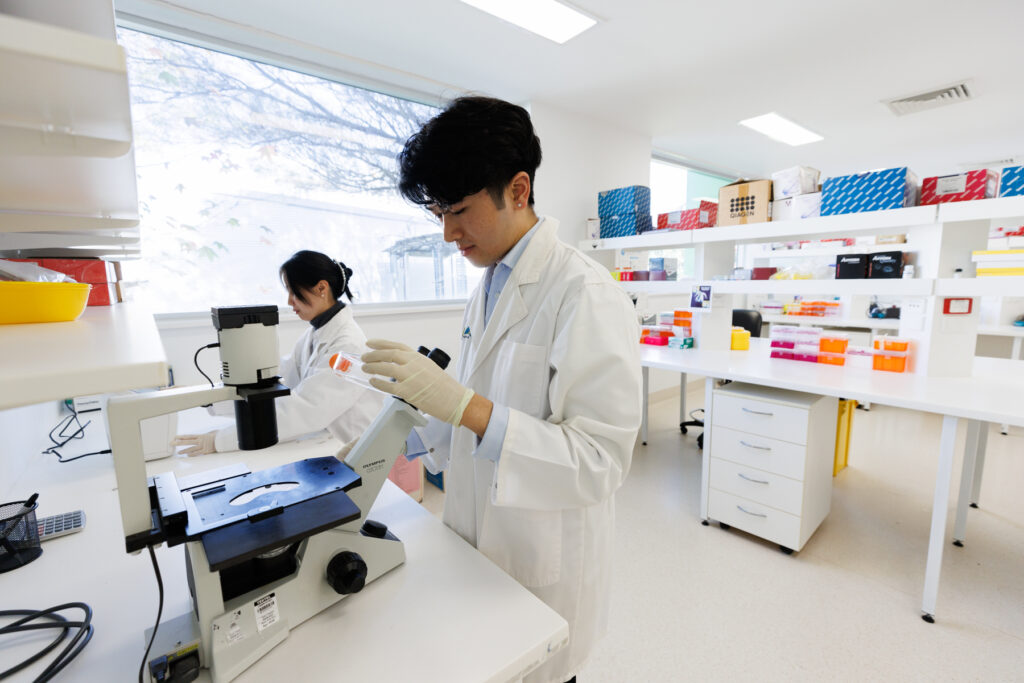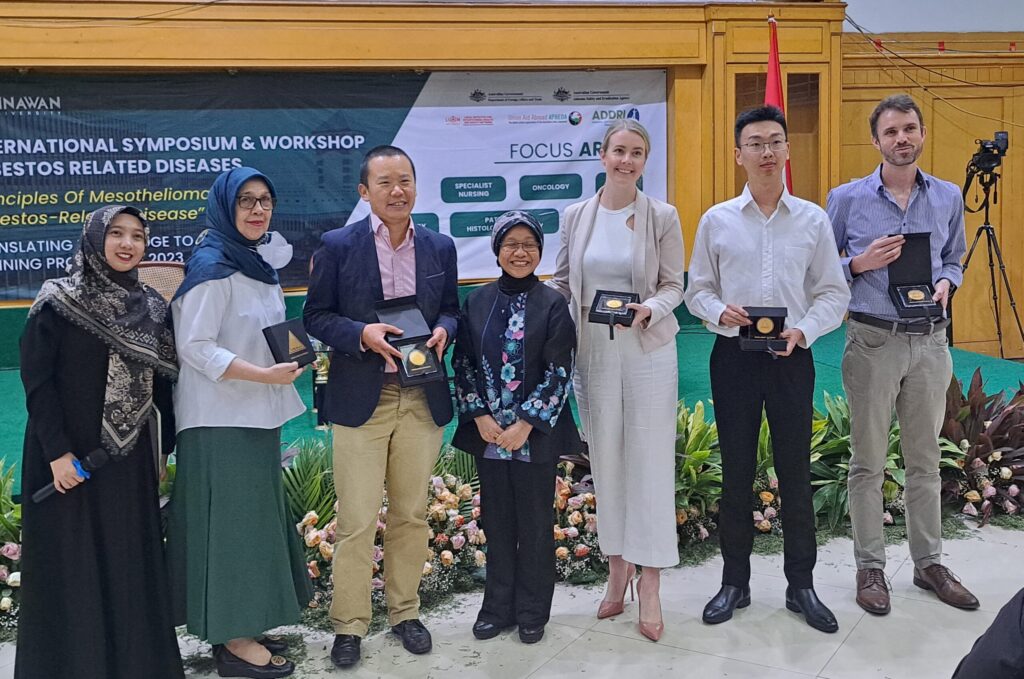Monitoring Mechanism
Asbestos Fibre Testing
Asbestos fiber testing is carried out by the Occupational Safety and Health Center in the Philippines both the qualitative analysis of determining the presence of asbestos fiber in the material and the quantitative analysis of the concentration of asbestos fiber in the air.
Asbestos Waste Management
The DENR-EMB Memorandum Circular No. 002 Series of 2015 requires all companies handling asbestos to register using a standard form called Asbestos Registration Form. It includes asbestos specific information, management information, preventive and control measures and treatment, storage and disposal information.(16)
Health Surveillance
Department of Labor and Employment DO 154 series of 2016 directs all asbestos exposed workers and those who are having asbestos-related activities to have medical surveillance program. This includes environmental and biological monitoring, and medical screening of present and retired asbestos exposed workers.(4)
Capacity Building
To enhance the monitoring mechanism, Asbestos Training Workshop for the Philippines was conducted by Asbestos Disease Research Institute team in July 2019. The goal of the asbestos training workshop was to advance the capacity of the Philippines to detect diagnose and treat cases of ARDs especially mesothelioma.(15)
Needs and Institutional Support
Medical Surveillance
As such, it is necessary to have a tangible framework for medical/health surveillance mechanism including reporting system especially for archipelagic islands like the Philippines, and continuous regular monitoring of all workers in all sectors including informal sectors and the public whether directly or indirectly exposed to asbestos.(3)
Data Banking
This can be conducted through an asbestos profile and medical surveillance network in collaboration with bureaus and agencies both in the regional and main offices concerned with ARDs, and the companies utilizing asbestos fibers and ACMs. Asbestos data banking should be made available and accessible to research professionals, law makers, and other pertinent authorities.
Information Dissemination
The Philippines may also need to have ARDs information dissemination down to local units to make the community (i.e. both the public and workers) aware of the hazards of asbestos, sign and symptoms of ARDs, how to avoid being exposed to such fibers and contact details in case of in adversity. An asbestos awareness and campaign will be beneficial as they will know how to protect themselves.
Research
The data from surveillance system and medical records can also be used as a secondary data for research. As such, research must be also instituted for in-depth study with regards to the profile, work environment, worker’s exposure, epidemiology and others especially for chrysotile type of asbestos.
Strategies
Asbestos Program
One of the key components of National Program for Elimination of Asbestos-related Diseases (NPEAD) is to have a National Asbestos Profile (NAP) on WHO and ILO template. The NAP for Philippines was completed in 2014 by the Department of Health in collaboration and consultation with other concerned agencies and Technical Working Group members. It is intended to facilitate countries especially those that are still using chrysotile type of asbestos to eliminate asbestos-related diseases through development of national asbestos programs. This NAP also provided a baseline information on ARDs, asbestos utilizing companies and population at risk of ARDs.(1)
Inclusion of Chrysotile Asbestos in Annex III of Rotterdam Convention
The impact of inclusion of Chrysotile asbestos and asbestos containing materials in Annex III of Rotterdam Convention, the Philippines can monitor its entry, sale and use, stop illegal trade, and protect human health and the environment. Also, according to the conducted independent health risks assessments of European Union, Chile and Australia, “Chrysotile asbestos was carcinogenic to humans and that there was no threshold of exposure below which asbestos did not pose carcinogenic risks” (EU), “there were no thresholds for the carcinogenic effect of chrysotile asbestos” (Chile), and “human exposure was associated with an excessive risk of asbestosis, lung cancer, and mesothelioma” (Australia).(17)
Various professional networks and organizations support the inclusion of chrysotile asbestos in Annex III of Rotterdam. EcoWaste Coalition based its decision from the researchers and WHO that “all types of asbestos can cause cancer to human”. Similarly, PAN Philippines centered their decision on the International Agency for Research on Cancer established findings that “there is sufficient evidence of carcinogenicity in humans for all types of asbestos”.(17) However, the Association of Chrysotile Asbestos in the Philippines, an association of local asbestos industry, decision was against the chrysotile inclusion. The reasons were based generally on social impact, and the concern on the banning of their raw materials – the chrysotile asbestos. However, banning of chrysotile asbestos in not the concern of the Convention but rather a national legislative or administrative measure.(17)
For that matter, the Philippine government supports the inclusion of chrysotile in Annex III. This will enhance the information exchange, national capabilities, management of chemicals, and local based information database for the improvement of national policies.(17)
Policy Adjustments
Threshold Limit Value for Asbestos Exposure
DO 154 lowered the occupational exposure threshold for asbestos fibre from 2.0 to 0.1 fibre/cc. However, this exposure concentration which was also similar to other countries, has been questioned by scientific community for “lack of scientific rigor, inadequate medical input, and lack of attention to financial conflicts of interest”.(20) since all asbestos fibres are considered carcinogenic, it might be wise to have a research specifically for chrysotile asbestos – more data of exposure both for asbestos and ACM, and association to ARDs. This is to determine the realistic exposure concentration that might cause an ARD and finalize the safest exposure level.
Total Banning
In 2014, there were 143 manufacturers and processing companies of chrysotile asbestos in the Philippines employing 5,289 workers. First and foremost, as per data have shown that these exposed workers can contribute Php 1.08 billion annually for the economy. However, the 30,000 indirectly exposed workers can contribute about Php 6.8 billion annually. The economic loss (in case of banning is approximately Php 1.08 billion as contributed by the exposed workers) is relatively small as compared to the societal cost (Php 6.8 billion per year contribution of indirectly exposed workers to economy) to the national economy.(3) Additionally, these 5,289 workers (in case that they would have ARDs), will spend Php 13.2225 billion (utilizing an average of Php 2.5 Million per year per patient). ARDs from occupational exposure are considered compensable as per government regulation.
More so, the manufacturers and processing companies can utilize safer alternatives for asbestos. These asbestos alternative materials can alleviate their financial loss.














